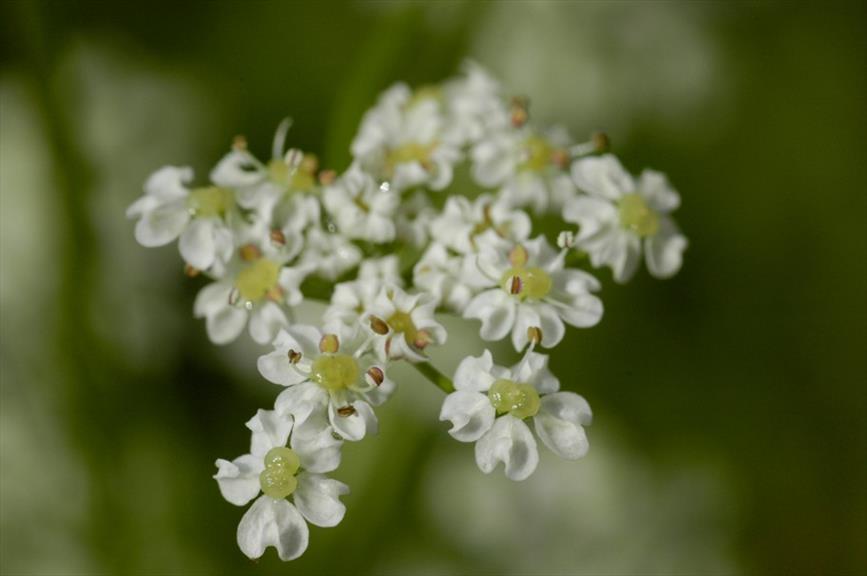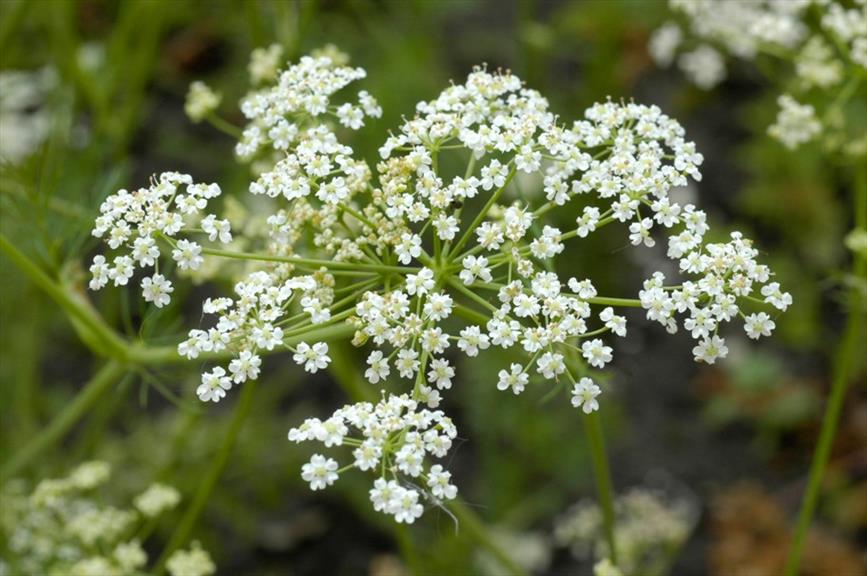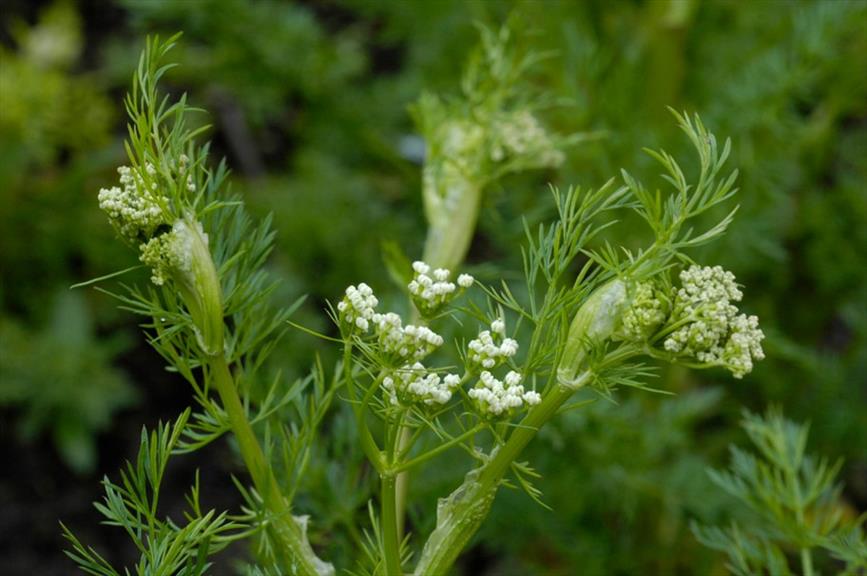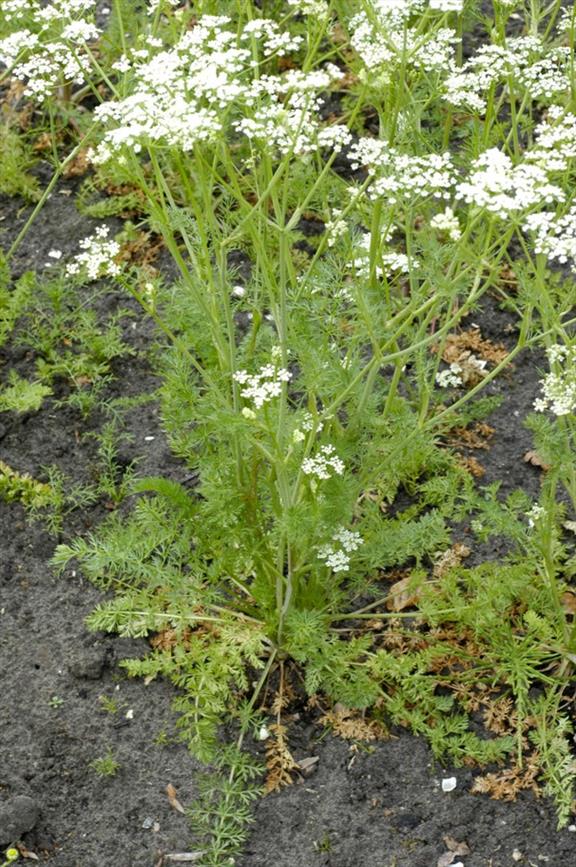Caraway
Carum carvi
Carrot family (Apiaceae)
Lightly arched and fragrant
The 'seeds' of this delicate, yet edible, umbelliferous plant have a spicy fragrance derived from compounds such as carvone and limonene. In the Netherlands caraway seed is cultivated, especially in Oldambt, for export. Caraway is often confused with cumin because of its similarity in taste and appearance. Caraway seed is darker and slightly curved whilst cumin seeds are straight.
The plant is widespread in West Asia, Europe and North Africa. In the Netherlands it is common locally in grasslands along rivers and south in the delta region; elsewhere it is rare and mostly overshadowed by other plants. Caraway thrives on moist, calcareous, moderately nutrient-rich and sandy clay soils, in meadows and along dykes. Caraway is not able to compete with more vigorous vegetation encouraged by infrequent mowing or fertilisation.
Read more.... »Themes
Crown jewel in the De Kruidhof Botanic Garden.
Caraway oil can be found in sausages, meat products, canned food, perfume, mouthwash, gargles and a special caraway liqueur. Caraway seeds is used in cheese, biscuits, rye bread and sauerkraut dishes.
In herbal medicine caraway seed is used to treat flatulence and cramps.
Caraway possibly originates from the Arabic word 'kerawi' or 'kerawia', a term used for several umbelliferous plants with aromatic fruits.
Details
| Description: | Herb, up to 0.30-0.60 m. |
|---|---|
| Distributions: | Europe and siberia |
| Habitat: | Grassland (fertilised meadows, pastures and floodplains and mountain pastures), roadside verges, dykes and sites disturbed by human activity such as building sites |
| Year cycle: | Flowers only once, (monocarpic biennuals and short-lived perennials) |
| Hardiness: | Colder than -4 f (very hardy) |
| Flowering period: | Mei - juni |
| Flower color: | White |
| Notes on flowers: | White |
| Fruiting period: | Juli - augustus |
| At its best: | Mei - juni |



